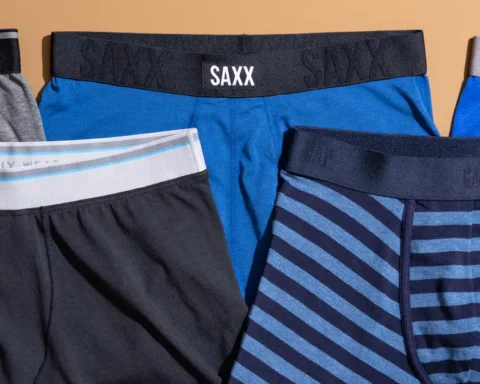Embroidery has long been revered as a timeless art form, adding elegance, texture, and sophistication to garments. When applied to t-shirts, embroidery brings a unique touch of craftsmanship and personalization, transforming plain shirts into fashion statements and customized apparel. In this comprehensive guide, we delve into the world of embroidery t-shirt printing, exploring techniques, design considerations, and tips for creating stunning embroidered t-shirts that stand the test of time.
Understanding Embroidery T-Shirt Printing
Embroidery t-shirt printing involves the process of stitching designs, patterns, or text onto t-shirts using specialized embroidery machines. Unlike other printing methods that apply ink or vinyl onto the fabric surface, embroidery creates raised designs with thread, offering a tactile and three-dimensional effect. This method lends itself well to intricate designs, logos, and lettering, making it a popular choice for custom apparel and branded merchandise.
Key Components of Embroidery T-Shirt Printing:
- Embroidery Machine: Specialized embroidery machines, equipped with needles, thread spools, and digitized design files, are used to stitch designs onto t-shirts. These machines offer precision and versatility in creating intricate embroidery patterns.
- Digitized Designs: Embroidery designs are created digitally using specialized software that converts images, logos, or text into stitch files. These digitized designs dictate the sequence and placement of stitches during embroidery.
- Hoops and Stabilizers: Embroidery hoops and stabilizers are used to secure the t-shirt fabric in place and prevent distortion or puckering during the embroidery process. Hoops hold the fabric taut, while stabilizers provide support and stability for intricate designs.
- Embroidery Thread: High-quality embroidery thread, available in a wide range of colors and finishes, is used to stitch designs onto t-shirts. Thread thickness and composition may vary depending on the desired effect and fabric type.
The Embroidery T-Shirt Printing Process
The embroidery t-shirt printing process involves several steps, from design preparation to final stitching, to ensure accurate and professional results. While the exact workflow may vary depending on the complexity of the design and the equipment used, the fundamental steps remain consistent:
Step-by-Step Process:
- Design Digitization: Begin by digitizing the desired design using specialized embroidery software. Convert the design into a stitch file format compatible with the embroidery machine, ensuring proper scaling and stitch density.
- Hooping the T-Shirt: Secure the t-shirt fabric in an embroidery hoop, ensuring it is flat and taut without any wrinkles or folds. Place a stabilizer beneath the fabric to provide support and prevent stretching during embroidery.
- Machine Setup: Load the digitized design file into the embroidery machine and select the appropriate thread colors and settings. Thread the machine with the chosen embroidery thread colors, ensuring proper tension and alignment.
- Test Stitching: Conduct a test stitch-out of the design on a scrap piece of fabric to ensure proper tension, alignment, and stitch quality. Make any necessary adjustments to thread tension, needle position, or design settings before proceeding to embroider the t-shirt.
- Embroidery Stitching: Position the hooped t-shirt under the embroidery machine needle, ensuring the design is centered and aligned as desired. Begin the embroidery process, allowing the machine to stitch the design onto the fabric according to the digitized pattern.
- Trimming and Finishing: Once embroidery is complete, remove the t-shirt from the hoop and trim any excess thread or stabilizer from the back of the design. Inspect the embroidered design for any imperfections or loose threads, making any necessary touch-ups.
- Pressing and Steaming: Press the embroidered design with a heat press or steam iron to flatten any remaining stabilizer and set the stitches. Be cautious not to apply too much heat, as excessive heat can damage delicate embroidery threads or fabric.
- Final Inspection: Inspect the embroidered t-shirt for any remaining imperfections or areas that may require additional trimming or touch-ups. Ensure the design is securely stitched and free of loose threads before packaging or wearing.
Advantages of Embroidery T-Shirt Printing
Embroidery t-shirt printing offers several advantages that make it a preferred choice for custom apparel and branded merchandise:
Benefits of Embroidery Printing:
- Professional Appearance: Embroidery adds a touch of professionalism and craftsmanship to t-shirts, making them suitable for business attire, uniforms, or promotional merchandise.
- Durability: Embroidered designs are highly durable and resistant to fading, peeling, or cracking, ensuring long-lasting wear and repeated washing without losing their quality.
- Versatility: Embroidery can be applied to various fabric types, including cotton, polyester, and blends, as well as non-textile materials such as caps, bags, and accessories.
- Texture and Dimension: Embroidery creates raised designs with thread, adding texture, depth, and dimension to t-shirts for a tactile and visually appealing effect.
- Customization Options: Embroidery offers endless customization options, including intricate patterns, logos, monograms, and lettering, allowing for personalized designs tailored to individual preferences.
Design Tips for Embroidery T-Shirt Printing
To achieve professional results with embroidery t-shirt printing, consider the following design tips and techniques:
1. Simplify Designs: Opt for clean, simple designs with bold lines and minimal detail to ensure clarity and legibility when stitched onto t-shirts.
2. Choose Suitable Fabrics: Select t-shirt fabrics that are compatible with embroidery, such as heavyweight cotton or polyester blends, to ensure stability and durability during stitching.
3. Consider Thread Colors: Choose thread colors that complement the t-shirt fabric color and contrast well with the background for maximum visibility and impact.
4. Experiment with Textures: Explore different embroidery thread types and textures, such as metallics, variegated threads, or specialty threads, to add visual interest and dimension to designs.
5. Placement and Sizing: Pay attention to the placement and sizing of embroidery designs on t-shirts, ensuring they are centered, balanced, and proportionate to the garment size.
Conclusion
Embroidery t-shirt printing offers fashion enthusiasts and DIY designers a timeless and elegant way to create custom apparel with sophistication and style. By understanding the embroidery printing process, exploring design techniques, and following best practices for production, you can create stunning embroidered t-shirts that make a lasting impression. Whether you’re crafting personalized shirts for yourself, designing branded merchandise for a business, or creating unique gifts for friends and family, embroidery t-shirt printing allows you to express your creativity and make a statement with every stitch.
Stay in touch to get more updates & news on Essential Tribune!








